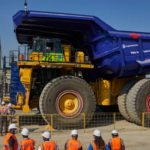Crosstown Commercial Team / April 11, 2019
The Retail Industry’s Stalwart Is Facing New Challenges
Food and beverage offerings located within retail complexes for years have been a huge boon to the Twin Cities local retail market (think how successful IKEA meatballs are, or even in Chicago or New York, one of many Eataly in house food options – hey, you can even make your own mozzarella!) but similarly these retail industries with inside food offerings are now struggling with rising costs, tightening margins, a shrinking and challenging labor force hence creating whole new headaches for retail and restaurant owners alike.
If not under their own building ownership and amid an environment of escalating rents and widespread vacancies (think West End, St. Louis Park), food and beverage operators have normally been a bright spot with retail complexes or very near to them. Time crunched, budget and cash-conscious consumers are flocking or ordering online and the online shopping experiences are beginning to rule the day while substituting traditional retail therapy while shopping in person. All these trends are starting to damage the traditional brick-and-mortar stores locally and nationwide (except for maybe Costco and their buck fifty 100% beef hotdog and beverage steal!). Bars, restaurants and various food concepts — some of the last restaurant/retail segments that can’t be re-created online — have been a major driver of retail deals over the last few years and now among all else, food truck season is just around the corner (once spring finally does arrive and the snow finally melts!). But as businesses adjust to new minimum wage laws (in Minneapolis and surrounding communities) resulting in evermore pressure on the margins or closings, sources say it is becoming even harder for food near retail offerings to pencil out a profit in the black. It’s all under some serious pressure as there are hundreds of other options to choose from and Uber Eats or other food delivery is more than happy to deliver the goods if need be. Minimum wage requirements, space build-out costs and even increasing CAM costs are starting to have an impact on the bottom line. Are rent reductions in the works? Maybe, but for the most part, landlords have been open to those discussions because they don’t want another vacancy and a big “awakening” just by the big national landlords operating restaurants/retail is starting to take notice and normally a key part of supporting their core offerings is being eroded in many ways.
Last year, New York City alone lost around 6,000 restaurant jobs according to Crain’s New York Business reports, citing Independent Budget Office figures and Minneapolis has had as many closings as there are openings, even from well received, award winning operations. Some restaurateurs say increased minimum wage still can put some operators out of business but frankly, foodflation and the labor pool is typically a big reason too…and farm to table is expensive people! Quality is there in farm to table, but the consumer budgets are not necessarily antsy to get there even though the convenience of delivery sure has a way to make a 20-25% up-charge in consumer cost more palpable. On the tenants’ side there is a lot to deal with also: food costs, labor costs, pressure on rents and oh yeah, payroll. Need to make payroll too, that’s probably important.



























